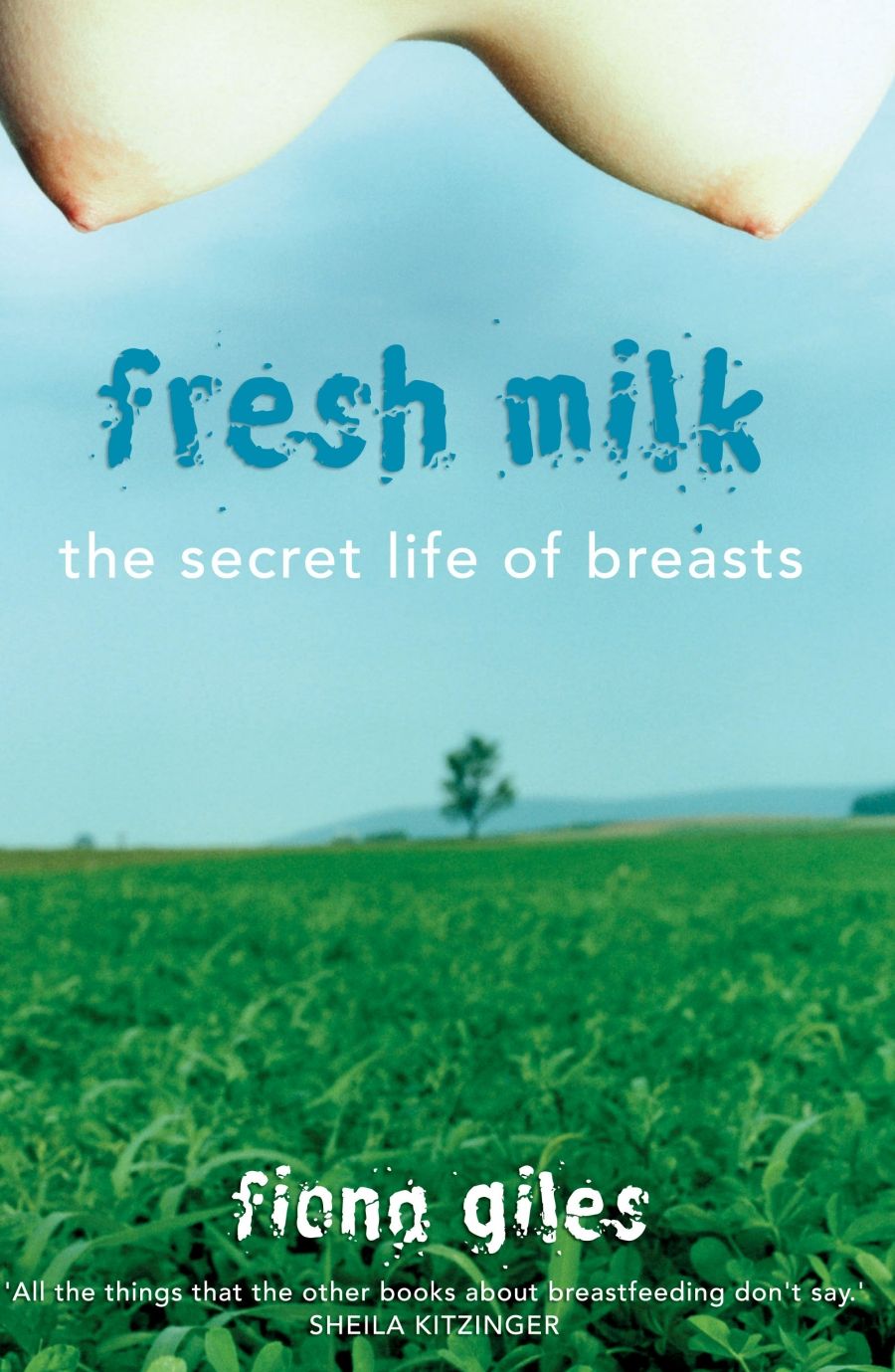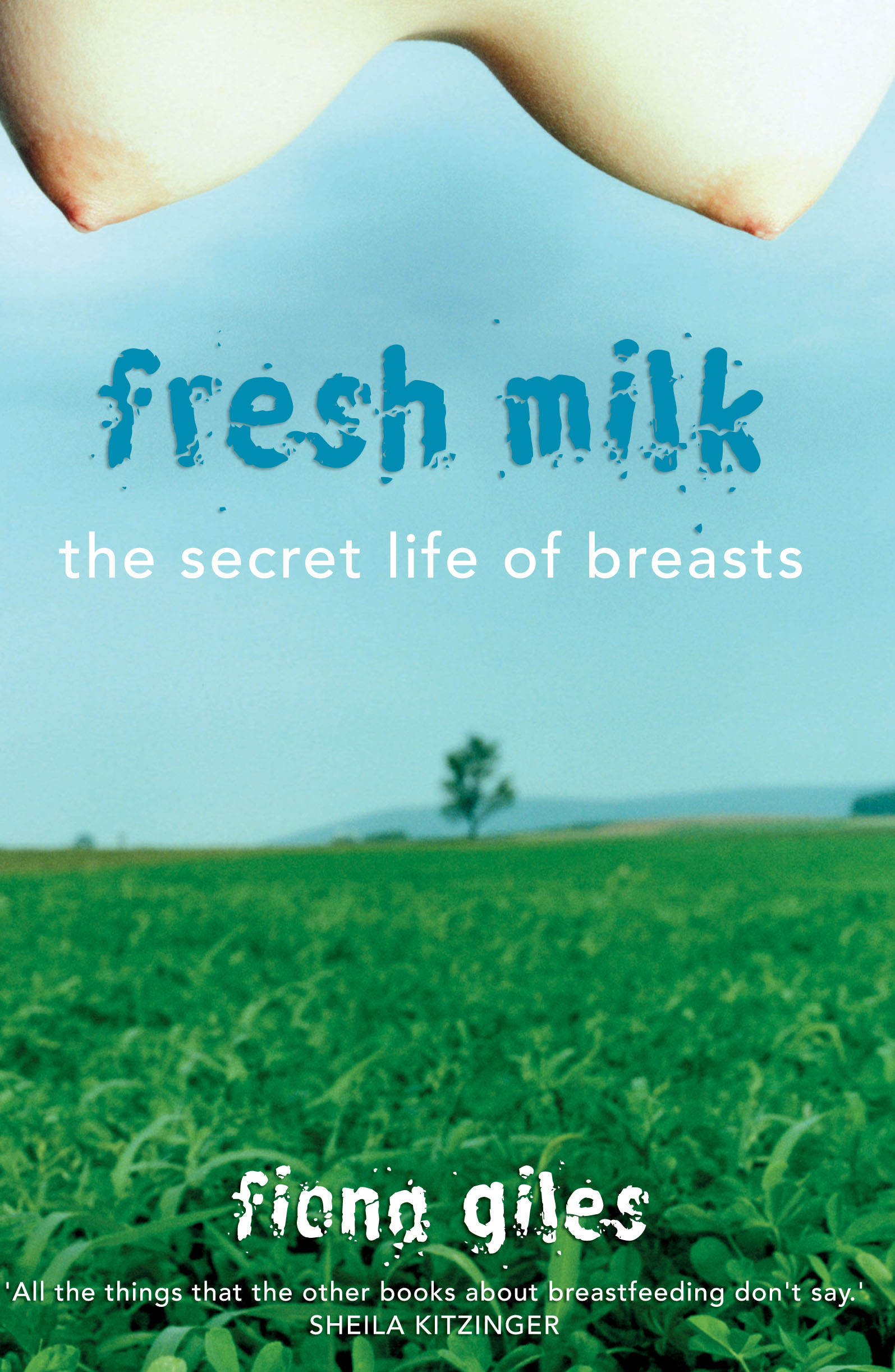
- Free Article: No
- Contents Category: Cultural Studies
- Review Article: Yes
- Article Title: Lactating Moms
- Online Only: No
- Custom Highlight Text:
Despite the recent proliferation of under-graduate courses with the word ‘sex’ in the title, universities continue to be rather unsexy places. While it may be common for students to discuss the phallus, academics do not generally pose naked in milk baths. This, however, is precisely what Sydney University scholar Fiona Giles did. And the eye-catching image of the petite author (which graced the 15 March cover of Good Weekend magazine) has surely done more to promote her latest book, Fresh Milk, than any interview or public reading. The same goes for the magazine’s story, which focused on the book’s consideration of ‘lactation porn’.
All this attention-grabbing has got academics muttering about the lengths to which people will go in order to improve sales, so it is a relief to discover that Fresh Milk, like the full breasts it celebrates, is both well-rounded and thought-provoking. Though the book does consider the sexuality of breastfeeding, it is considerably more multifaceted than the sensationalist media portrayal suggests.
- Book 1 Title: Fresh Milk
- Book 1 Subtitle: The secret life of breasts
- Book 1 Biblio: Allen & Unwin, $24.95 pb, 267 pp
- Book 1 Cover Small (400 x 600):

- Book 1 Cover (800 x 1200):

Subtitled The Secret Life of Breasts, Giles’s book is concerned with what might be described as a cleavage in knowledge. Throughout, the author argues that breasts tend either to be sacralised – and therefore desexualised – or drooled over salaciously. In the former conceptualisation, they are associated with pristine, asexual motherhood; in the latter, with ‘norgs’ of the Pamela Anderson variety. Yet, as feminist philosopher Iris Marion Young writes: ‘Breasts are a scandal … because they disrupt the border between motherhood and sexuality.’ Exploring this scandal, Fresh Milk is a moving, funny and boundary-defying celebration of lactating breasts. Drawing on her academic background, Giles exposes the leaky bosom and thus precisely the breasts that are usually cloistered away inside ‘comfortable’ and decidedly unsexy maternity bras. Unravelling neatly dichotomous constructions of motherhood and female sexuality, Giles brings more liberal representations of breastfeeding and maternity to the fore.
An inclusive account, Fresh Milk derives considerable power from its multivocality. Along with Giles’s ground-breaking weaving of fiction with non-fiction, this writing/collating method is a testament to her research skills and creativity.
Giles’s abilities as an editor have been amply demonstrated in her collections, Dick for a Day and Chick for a Day. In Fresh Milk, her role is more than editorial, justifying her authorial status. Nevertheless, representing a compilation of her own and other people’s words, the book challenges conventional Western notions of authorship via its dialogism. By the end, the possible meanings of breastfeeding have expanded such that accepted depictions of discreet mothers tucking hungry babes under their jumpers coexist with more risqué images, including adult and kitten feeding.
In addition to a wide range of stories – about everything from wet-nursing to fathers’ experiences of breastfeeding – Fresh Milk includes sections that simply list answers to questions, for instance: ‘If your breasts could speak, what would they say?’ Some responses are pithy, others moving, but, as with the book as a whole, it is their sheer diversity that impresses. In one particularly appealing section, Giles records children’s responses to their mother’s questions about breastfeeding. For instance: ‘Can I see it? Can I hold it? Can I suck? – Boy, age six’; and ‘It was confronting and relaxing and I looked forward to it. It was warm. – Boy, age eight.’ While providing insight into the profound feelings that lactating breasts evoke, these articulations are also raw and amusing.
Fresh Milk also includes recipes, such as ‘Gayle’s Breast Pump-kin Pie’. This Thanksgiving recipe, like her spelling, punctuation and choice of words (for example ‘diaper’), reveals the author’s unabashed attempt to cater for an American market. While this is perfectly reasonable, it seems imperialistic to pretend that the Australian interviewees talked about their ‘Moms’.
A more significant limitation arises from Giles’s decision to privilege light-heartedness and polyphony over academic enquiry. In general, the book’s accessibility, spirit and pace are valuable, and it is unlikely Fresh Milk would have retained these features if the author had adopted a more academic style. However, there are times when the book might have been enriched by a more far-reaching contextualisation of issues. For instance, Giles includes a story by a mother who was outraged when her daughter was breastfed by another woman without her consent. Giles’s non-judgmental attitude towards this mother is representative of her refreshingly postmodern and liberating view of breastfeeding, a subject that so often becomes weighed down by dogma. On the other hand, by adopting an approach that is more accepting than it is analytical, Giles tends to preclude the kind of historicising perspective that characterises academic writing. Consequently, there is no critical appraisal of the relationship between the mother’s anger and the (Western) socio-political construction of motherhood as an isolated and individualised enterprise. It would be wrong-spirited to take this criticism too far, however, because so much of the joy of Fresh Milk is attributable to the author’s permissiveness. Indeed, Giles has set a new standard for books about breastfeeding, a subject usually discussed in dry, prescriptive tones.
Never sentimental, Fresh Milk is open-hearted, open-minded and affecting. It creates a resonant impression of the strange and sometimes dull experience of breastfeeding. In its highly sensuous light, Giles’s Good Weekend spread seems less like salesmanship than a playful and embodied deconstruction of the boundaries between motherhood and sexuality, scholarliness and corporeality.


Comments powered by CComment